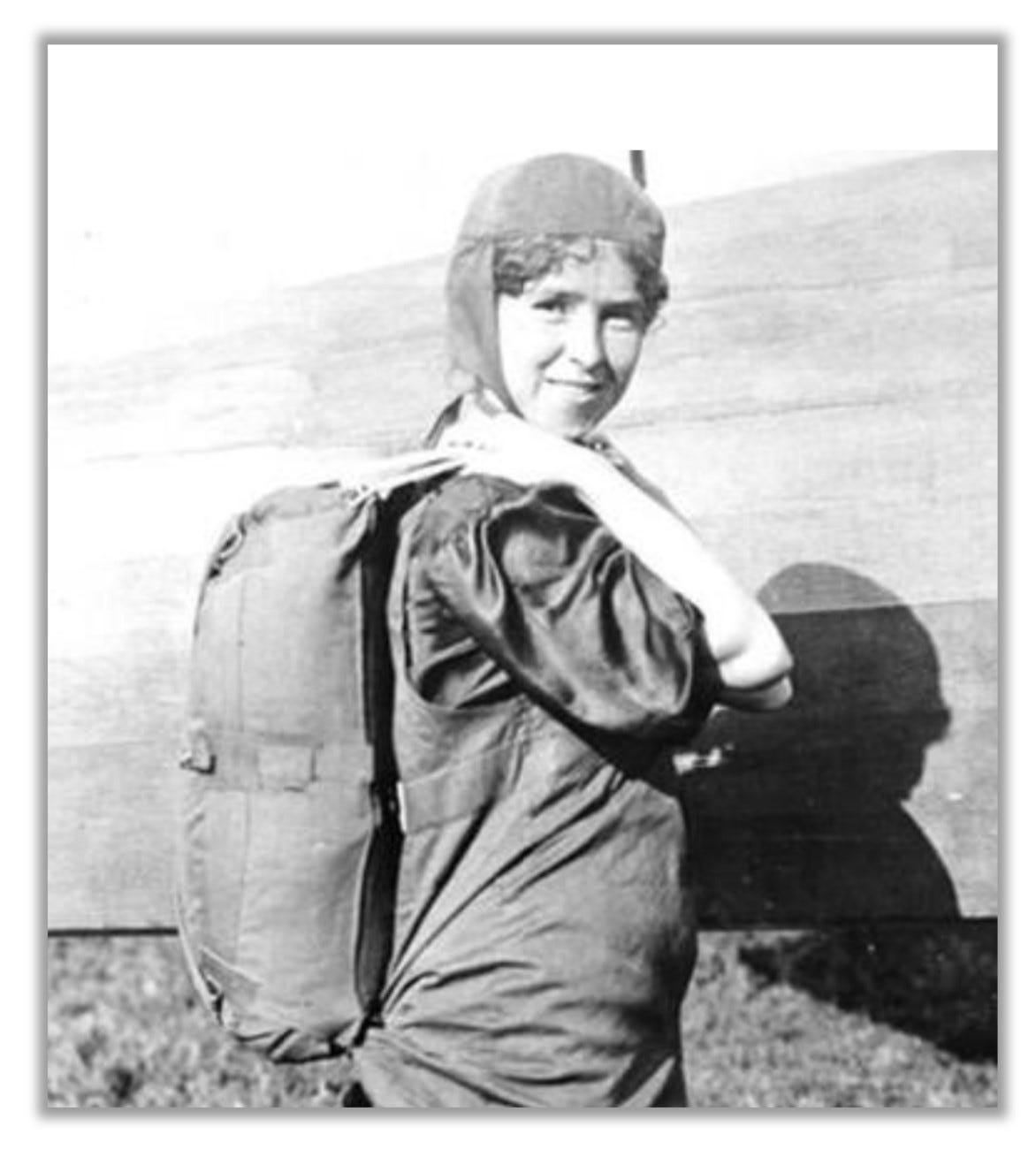TDIH: Tiny Broadwick, aviation pioneer
Georgia “Tiny” Broadwick has been called the “First Lady of Parachuting.”
On this day in 1893, a future aviation heroine is born. Georgia “Tiny” Broadwick has been called the “First Lady of Parachuting.”
Tiny grew up on a farm, the youngest of seven children. Life was hard, and there wasn’t much money. Tiny got married when she was 12 and had a baby at 13. Soon afterwards, her husband abandoned her. Tiny was left alone, with only a low-paying job at the local cotton mill.
Fortunately, fate intervened: A traveling carnival came through town. Tiny watched The Broadwicks and their Famous French Aeronauts in astonishment. Its star, Charles Broadwick, traveled up in a hot-air balloon, then parachuted back to earth.
“I wanted to join them,” Tiny later said. “I was hell-bound and determined to get in that act!” She waited for the aeronauts after the show and convinced them to take her on. Her small size was a benefit—and her gender didn’t hurt, either. A pretty female stuntwoman was always a draw.
Tiny had little choice but to leave her baby with her parents, promising to send money for the baby’s support. In the meantime, Charles legally adopted Tiny because it was otherwise considered socially improper for her to travel alone with a man.
Tiny made her first jump when she was just 15 years old.
Charles billed Tiny as “The Doll Girl” and had her dressed in frilly clothes. Tiny hated the costume, but she loved falling from the sky. “From up in the air I can appreciate the beauty of the earth from a new perspective and felt that I was in the presence of God,” she once said.
Audiences, of course, were spellbound.
Tiny’s jumps were mostly successful—but not always. On one occasion, she got tangled up in a windmill and some high-tension wires. Another time, she landed on the caboose of a train. Her landing on the roof of a grist mill made the news. “Unable to get a hold on the roof, she fell two stories to the ground, breaking her left arm and sustaining other injuries,” the Baltimore Sun reported.
The aeronauts spent years working with hot air balloons, but a meeting with aviator Glenn Martin in 1912 would change Tiny’s focus. Martin was then investigating the use of parachutes aboard airplanes for pilot safety. In June 1913, Tiny took to the skies with Martin and became the first woman to parachute from a plane.
“It was much easier than leaping from a balloon,” she said of the feat. “There was not so much of a strain when the parachute opened because I was dashing sideways as well as downward.”
The following year, Tiny and Martin demonstrated their parachute to U.S. Army officers. World War I was just beginning, and the military was looking to save pilots. The parachute that Tiny was using relied on a string attached to the plane’s fuselage. When Tiny jumped, the string would tear a cover off, enabling the parachute to fill with air and open.
Tiny’s first three demonstration jumps were uneventful, but her fourth took an unexpected turn: The parachute line got tangled on the plane’s tail. Tiny was dangling after the plane, unable to climb back in.
How many could keep their cool in that situation? Tiny did. She cut the line holding her to the plane, leaving a little bit of it still attached to the parachute. As Tiny fell away from the plane, she pulled the remaining piece of line manually.
She’d inadvertently created the first rip cord!
Tiny’s discovery opened a whole new world. Pilots would be able to safely eject from airplanes with their parachutes, the “life preserver of the air.”
And it was all because of a petite woman with an immense amount of bravery.
Sources can always be found on my website, here.



Love this story. What a brave woman. Would love to see a movie made about her!
Met her and got her signature at a Parachute Meet in Talequah, Oklahoma in the early ‘70’s. Very interesting Lady.